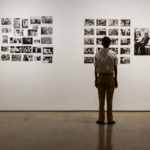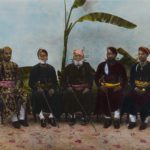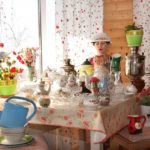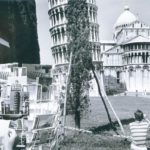Train Your Lens On This Photographer
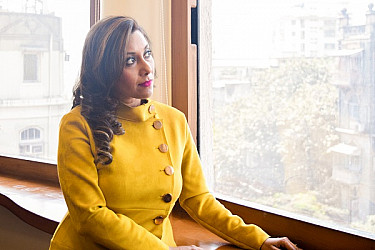
Among the many exhibits at FOCUS is a special one – the Call For Entries segment, themed ‘Autobiography as Memory’. This year’s shortlist comprises of entries from Italy, Bangladesh, Canada, Spain, Japan, and many others. Local photographer Ashita Majumdar Ganatra’s work caught our eye with her impressively designed images and affinity for self-portraits.
She hails from an advertising background, at the time indulging in photography merely as a hobby. Every image veers towards being an artwork with vivid backgrounds and layer upon layer of whimsical elements. This offbeat process has been lauded by the likes of Vikram Bawa and Raghu Rai, and rewarded at various competitions. Verve speaks to this Mumbai-based photographer about her work process, her influences, and her fondness for Photoshop.
Let’s rewind to your journey as a photographer….
“Post college, which was at Rachna Sansad, I landed an assignment for GAIL (Gas Authority of India Limited). An aunt, who knew I was keen on learning photography, handed me a project of black and white portraits taken at various Irani cafes. Without any formal education in photography, I used this to experiment and build my portfolio. I showed these pictures to Vikram Bawa, who was very impressed with my work and took me under his wing. After assisting him for a year and a half, I started freelancing. I was doing well — a lot of fashion, portraiture, and still life. There came a point where it wasn’t sufficiently fulfilling. Everybody got into mainstream fashion those days. I wanted to do something different to stand out. That’s when the idea of self-portraiture came to mind.”
Why self-portraits?
“I’m a daydreamer. I can slip into a zone and start fantasising about things. When I have these ideas, I want to act soon, because the whole thrill is in that moment. I couldn’t go hunting for a model, and thought it would be best to do it myself; the model could be replaced later. After the first time, it felt like the most obvious thing to do.”
How does an artwork come to be – from the idea to the final product?
“Initially, it is my look that I think about. Once I photograph myself, I build the story around it. My work is very close to nature. There are a lot of elements like foliage, trees, flowers, butterflies, insects and animals. I would have loved to paint but I realise my shortcomings, and Photoshop is a ‘dream fulfiller’. I paint with the software, as it allows me to change the background elements, the skies, clouds, etc. Sometimes there are days when I can’t figure the whole image out. I close it, put it away, and come back to it again. I start working on something else. If you look at it too often, you don’t really see what’s missing. Therefore, sometimes the process is very long. Maybe weeks or even months.”
Is there something you do to break away from your work?
“I just move away. I stop doing something. At times, I just don’t do it. I work with my husband in the same office. At times, I may not do anything. I might just surf, look at other people’s work, go for a movie, because movies are a great influence again. I love sci-fi. Like Inception.”
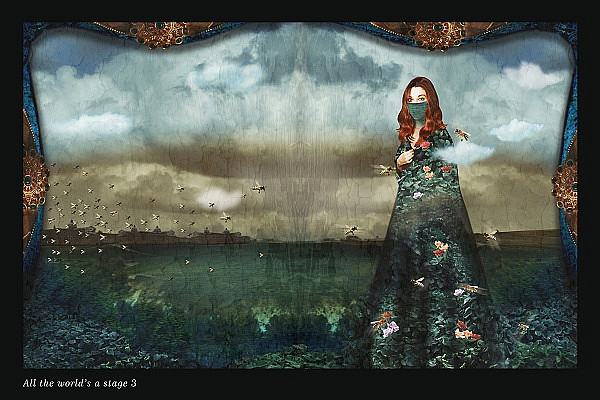
What is the concept behind the award-winning All the world’s a stage? Give us an artist’s interpretation of it.
“I believe I am very spiritually awakened. I like to look for the reason behind everything. There are times when you wait for something and it will never come to you and there are times when things are happening. You feel helpless. You also feel that there is somebody up there pulling your strings, and that’s when the thought of All The World’s A Stage came to my mind.”
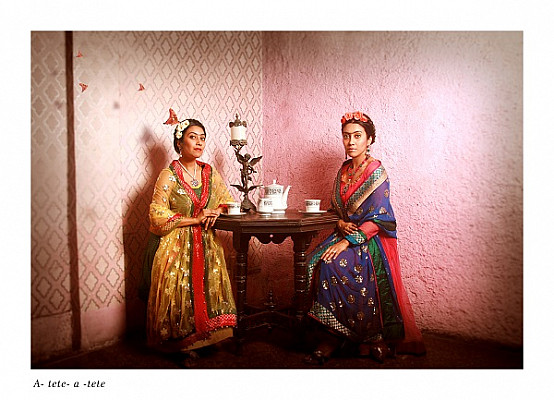
Where does ‘the look’ come from, like in A tete a tete?
“It comes from my wardrobe. I have a friend who is a designer. He made this for me. My sister-in-law had the same outfit made in a different colour. I love collecting things. I’m using two outfits of the same kind in that particular image, which was inspired by Freida Kahlo. The make-up was done by me, although I needed help for the hair. The entire concept was mine.”
When working, how important is background noise?
“I like chaos. A lot of times that’s what gives you your focus. You can see my artworks. They’re in layers, with a lot of elements. I’m not content with one picture because I like the mess. My background noise is mostly my music. Someday I’ll listen to Beyoncé, someday a ghazal.”
You’ve mentioned that Indian mythology is a major influence. What about it strikes your fancy?
“Our ancient paintings and our mythology are like a treasure trove. The vahanas like Ma Saraswati on a beautiful swan, the angels — similar to those in Western mythology, the goddesses — I love everything about it. A lot of my work will have that kind of intricacy. And I love the idea of flying animals. They really fascinate me.”
What are some of your other influences?
“When you go to rural places, you see women dressed up in lovely yellow saris and the men with pink phetas. In Kutch, women wear backless blouses with gorgeous handiwork. There’s a lot of colour involved. Anything that has intricacy and craftsmanship inspires me.”
Who do you look up to?
“Our very own Freida Kahlo, Amrita Sher-Gil. I discovered much later that she also did self-portraits. I love her work and just her as a human being.”
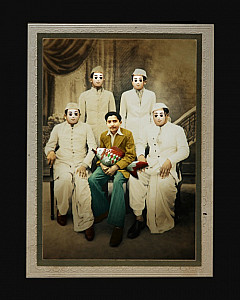
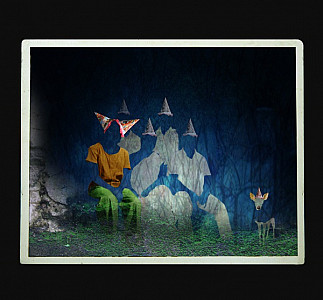
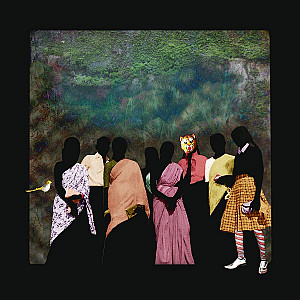
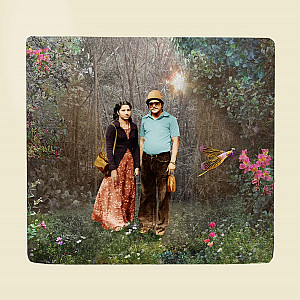
Tell us a little about what you will showcase at the FOCUS Festival.
“I’m showcasing a series called Before Now. I stumbled upon old black-and-white photos while at my grandmother’s place. They were as small as 2×2 inches. I just couldn’t take my eyes off of them. Those days, nobody smiled in pictures – they were all straight and serious. I was intrigued to know what was going on. I picked up a few of them, scanned them and changed the black and white to colour first. Since they were vintage, I thought I’d add a contemporary element to them and see how that works, because this is my imagination of them. Another thought that’s worked in, is that over time you tend to forget who the people are. That’s why the faces aren’t there. They are black.”
Which is the one memory that you would like to relive?
“My childhood. We used to travel a lot. My father was a professor. At any given opportunity, I would be woken up and taken to these little places around Mumbai. I love travelling. That came from my childhood.”
The ‘Call For Entries’ Exhibition will take place at Dr. Bhau Daji Lad Museum, Mumbai, from March 9-23, 2017. Visit www.focusfestivalmumbai.com for details and stay tuned for Verve’s round-up.
Related posts from Verve:
Verve Trending
Sorry. No data so far.
us on Facebook to stay updated with the latest trends

